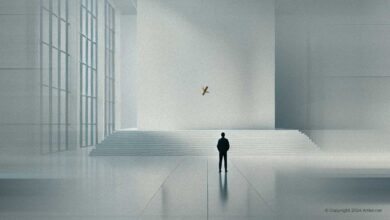In the world of fine art, few stories have captured the public’s imagination as intensely as that of Salvator Mundi, a painting attributed to the genius of Leonardo da Vinci. Its rise from obscurity to becoming the most expensive artwork ever sold at auction in 2017 is a tale filled with intrigue, skepticism, and wonder. More than just a painting, Salvator Mundi is a symbol of art’s enduring power to mystify, inspire, and spark heated debate.
The Painting’s Creation
and Early History
Salvator Mundi, which translates to “Savior of the World,” is believed to have been created around 1500, making it a product of Leonardo da Vinci‘s mature years. The subject matter, Christ depicted as the savior of humanity, is a theme that has appeared in religious art for centuries. However, what sets Salvator Mundi apart from countless other depictions of Christ is its combination of intricate detail and unique composition, hallmarks of Leonardo’s masterful approach to painting.
The piece portrays Christ in Renaissance garb, holding a crystal orb in his left hand and raising his right hand in a gesture of blessing. The orb represents the heavens and symbolizes Christ’s dominion over the world. Leonardo’s precise rendering of light and shadow, his distinctive sfumato technique—blurring edges to create a soft, natural transition between colors—imbue the painting with a sense of depth and lifelike quality that was revolutionary at the time.
However, the painting’s history after its creation is anything but straightforward. For centuries, Salvator Mundi seemed to vanish from the historical record, its whereabouts uncertain. It wasn’t until the early 21st century that the painting would resurface, sparking a new wave of interest and speculation.

Wikimedia Commons, Public Domain. File: Leonardo da Vinci or Boltraffio (attrib) Salvator Mundi circa 1500. Photographer: Dcoetzee.
The Rediscovery and Restoration
In 2005, Salvator Mundi reappeared in the art world, though not in the form many would have expected. The painting was discovered in a private collection in the United States, attributed to an unknown artist. Initially, it was dismissed by many as a poor copy of a lost work by Leonardo, but its true potential had yet to be recognized.
Experts believed it was in dire need of restoration, and that process became the key to unlocking its true identity. As the restoration progressed, layers of grime, overpainting, and varnish were carefully removed, revealing the fine details and delicate brushstrokes that echoed the style of Leonardo. Though many were still skeptical, those working on the restoration were convinced they were working on an original da Vinci.
The process was not without controversy. Some experts questioned the extent to which the restoration work had altered the painting. Nonetheless, the restored version, which emerged with a much clearer, more refined visage of Christ, seemed to confirm what many had suspected—that this was no mere copy, but an authentic work of Leonardo da Vinci.
The Road to Auction:
A Painting Reborn
After years of careful restoration, Salvator Mundi was finally ready for the spotlight. The painting was displayed for the first time in public in 2011, at the National Gallery in London, where it was hailed as a rediscovery of unparalleled significance. The art world buzzed with excitement, and some of the most prominent collectors and institutions took notice. Yet, despite its newfound fame, the painting’s fate was far from certain.
In 2013, Salvator Mundi was acquired by the Russian billionaire Dmitry Rybolovlev for a reported $127.5 million, a sum that was jaw-dropping at the time but only a fraction of the fortune it would later command. The purchase, however, set off a chain of events that would ultimately lead the painting into the hands of the Kingdom of Saudi Arabia.
As the years passed, the painting remained somewhat shrouded in mystery. Rumors circulated about its future, with speculations about who would finally acquire it and at what price. The true value of Salvator Mundi, both in terms of its historical significance and its market potential, had yet to be fully realized.
The Record-Breaking Auction
Then, in November 2017, Salvator Mundi was placed under the hammer at Christie’s New York, setting the stage for one of the most dramatic auctions in history. The painting was offered for sale with an estimated price of $100 million, already a substantial amount for any artwork. What followed was a fierce bidding war that captivated audiences worldwide.
The painting sold for an astonishing $450.3 million, breaking records and redefining the art market. The price was not only a reflection of the rarity of the work but also the aura of Leonardo’s genius, which still held immense sway over collectors. The buyer was revealed to be Prince Badr bin Abdullah bin Mohammed bin Farhan Al Saud, acting on behalf of Saudi Arabia’s Crown Prince Mohammed bin Salman. This purchase would mark the beginning of a new chapter in the painting’s saga.
The Saudi Connection
and Global Repercussions
The acquisition of Salvator Mundi by the Saudi Crown Prince sparked intrigue and speculation. It was widely believed that the painting was intended for display at the planned Museum of the Future in Riyadh, though its exact location has remained uncertain. The painting’s sale has only added to the growing presence of Saudi Arabia on the global cultural stage, with the country increasingly involved in the art market and cultural investments.
The acquisition also highlighted the shift in the art world, with high-profile buyers emerging from non-Western countries. The sale underscored the changing landscape of art collecting, where wealth and influence are no longer confined to traditional art capitals like New York, London, and Paris. The Crown Prince’s purchase of Salvator Mundi is emblematic of Saudi Arabia’s broader efforts to position itself as a cultural hub, using art as a means to bolster its global image.
The Enigma
of Salvator Mundi
Despite its astronomical price and widespread fame, the story of Salvator Mundi remains shrouded in mystery. Questions continue to swirl about its attribution. Was it truly painted by Leonardo, or was it the work of one of his talented disciples? Even with the painting’s restoration, some doubt persists regarding its authenticity. The debate between scholars, restorers, and art historians continues to this day, with no definitive consensus reached.
Adding to the enigma is the fact that the painting’s whereabouts have been kept secret since its sale. It has not been publicly displayed since the auction, and the Saudi Arabian government has yet to reveal where it will ultimately reside. This has only fueled the sense of mystery surrounding the painting, as its elusive presence in the art world adds to its mystique and intrigue.
A Timeless Legacy
What remains undebatable is the painting’s legacy. Salvator Mundi is a symbol of the timeless allure of Leonardo da Vinci’s work and the ever-evolving art market. It serves as a testament to the ongoing fascination with Renaissance masters and the lengths to which collectors will go to secure a piece of art history.
The saga of Salvator Mundi is more than just the story of a painting—it is a reflection of how art continues to captivate our imaginations and influence the world around us. As the art world evolves, Salvator Mundi will undoubtedly remain a focal point in discussions about art, culture, and the complexities of the market. Whether it’s displayed in a museum, tucked away in a private collection, or held as a symbol of global power, the story of Salvator Mundi will remain an indelible part of the narrative of the world’s most revered artwork.
References
- Christie’s. (n.d.). Salvator Mundi — The rediscovery of a masterpiece.
https://www.christies.com/en/stories/salvator-mundi-timeline-c2649d575ad54e50bb64eb79f51ba10c - The Guardian. (2024, August 24). Salvator Mundi, Saudi Arabia and the saga of the missing masterpiece.
https://www.theguardian.com/artanddesign/article/2024/aug/24/salvator-mundi-saudi-arabia-and-the-saga-of-the-missing-masterpiece - The Times. (2024, August 24). World’s most expensive painting to form centrepiece of ‘Saudi Louvre’.
https://www.thetimes.co.uk/article/crown-prince-plans-louvre-of-saudi-arabia-around-450m-leonardo-j0ltfpx65 - Smithsonian Magazine. (2024, August 24). New Research Suggests ‘Salvator Mundi’ Originally Looked Different Than We Thought.
https://www.smithsonianmag.com/smart-news/new-research-suggests-portions-salvator-mundi-were-not-part-leonardo-da-vincis-original-design-180976914/ - NPR. (2017, December 7). Mystery Solved: Saudi Prince Is Buyer Of $450M DaVinci Painting.
https://www.npr.org/sections/thetwo-way/2017/12/07/569142929/mystery-solved-saudi-prince-is-buyer-of-450m-davinci-painting - ArtDex. (n.d.). Salvator Mundi: The Complex History Behind the Last Leonardo da Vinci.
https://www.artdex.com/salvator-mundi-complex-history-behind-last-le




